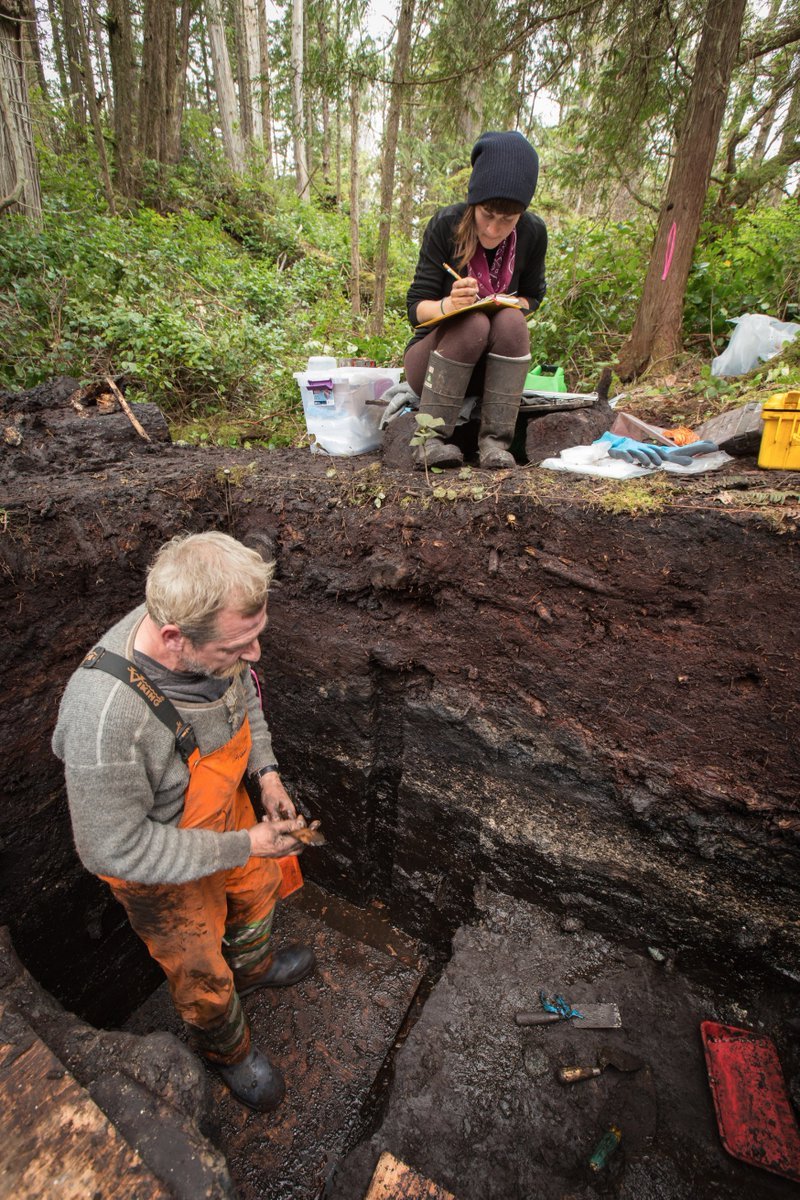In their oral history, the Heiltsuk people recount how the region encompassing Triquet Island, on the western coast of their territory in British Columbia, remained open land throughout the Ice Age.

According to William Housty, a member of the Heiltsuk Nation, many people went to this particular place for survival since all around them was being overtaken by ice, the ocean was becoming icy, and food resources were becoming scarce.
In the early 2017, archaeologists in search of artifacts were excavating in a Heiltsuk village on Triquet Island (British Columbia), Canada, when they stumbled upon an incredible physical proof – a few bits of charcoal from an ancient firepit.
An analysis of the carbon pieces suggested that the village, abandoned since the 1800s due to a smallpox outbreak, was likely inhabited around 14,000 years ago, making it three times as ancient as the Giza pyramids and one of the oldest settlements in North America.
According to Alisha Gauvreau, a scholar at the Hakai Institute and a PhD candidate at the University of Victoria, who had been working at the Triquet Island site since the past few years, the archaeological evidence from Triquet Island suggests people have been inhabiting the area for tens of thousands of years; and there are several other sites that date back to around the same time period as the very early date obtained for Triquet Island.
Gauvreau explained the reason why Triquet Island remained visible throughout the Ice Age was due to stable sea levels in the vicinity, which is a phenomenon known as sea level hinge.
She elaborated that the majority of the landmass was under sheets of ice. As these glaciers began to retreat, the sea levels up and down the coast varied between 150 to 200 meters compared to here, where it stayed exactly the same.
The outcome was that people were able to go back to Triquet Island frequently. She also noted that, while other nearby areas demonstrate proof of ancient occupants, the inhabitants of Triquet Island “were clearly remaining longer than anyplace else.”
In addition to the discovery of charcoal at the site, she stated archaeologists had located tools such as obsidian blades, atlatls, spear throwers, fishhook fragments, and hand drills for starting fires.
Gauvreau further stated the evidence of the fallen assemblage, together with many other factors, suggests that the first humans made relatively basic stone tools out of materials easily accessible to them. She went on to say that this was likely done out of convenience.

The site also indicated that early people employed boats to capture marine mammals and collect shellfish, according to the source. Additionally, people in the same period journeyed long distances to acquire nonlocal materials such as obsidian, greenstone, and graphite to make tools.
Archaeologists and anthropologists were bolstered by the find in their idea of the “Kelp Highway Hypothesis” which suggests that the first inhabitants of North America used boats and followed the coastline in order to avoid the icy terrain.
Gauvreau affirmed that the evidence points to people being able to navigate the coastal area via boat or other watercraft.
For the Heiltsuk Nation, having collaborated with archaeologists for years to pass on knowledge and recognize sites like Triquet Island, the revised archaeological record furnished fresh evidence as well.
This nation is in the habit of discussing with the Canadian government concerning matters of land governance and natural resource handling – negotiations that are partly reliant on the community’s obscured oral history of inhabiting the region for extended periods.

“So when we’re at the table with our oral history, it’s like me telling you a story,” Housty explained. “And you have to believe me without seeing any evidence.”
He stated that with both oral history and archaeological evidence in unison, a compelling narrative is created, giving the Heiltsuk an advantage in their negotiations. He remarked that it would have a noteworthy effect and, without doubt, give them an advantage in further discussions with the government.




